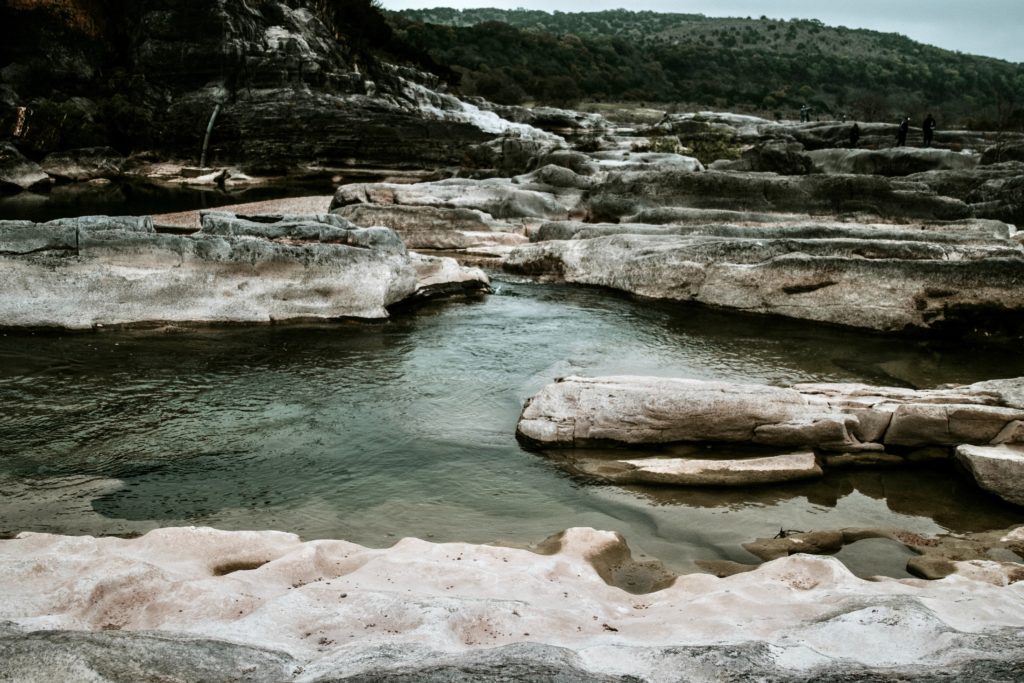This article by Ray Spitzenberger first appeared in IMAGES for July 9, 2020, East Bernard Express, East Bernard, Texas.
Although he was born in Carmine, Texas, my father grew up in Dime Box, married, and raised his family there (which included me). Daddy was an avid fisherman! Fresh water! I don’t think he had ever been to the Gulf of Mexico until much later in life. But the creeks in Dime Box in those days were clear and unpolluted, and fish were abundant, and the Colorado River was only about 38 miles away, whether in the direction of Bastrop or LaGrange. My father and my uncle would take the women and the kids to the small creeks to fish, but only the men would risk fishing on the big Colorado River, and even they were afraid of it.
I grew up, thinking of the mighty Colorado, 38 miles from our house, as something really terrifying, and of course, like my father, I had never seen the Gulf of Mexico. Well, it was over 850 miles long, the longest river to start and end in Texas, a fact I did not know at the time. Nor did I know there was another Colorado River, even bigger, that began in Colorado, flowed southwest through Utah, then south through Arizona before emptying into the Gulf of California. Our river, the Texas Colorado, starting somewhere between Lamesa and Big Spring, then flowing on down between Brownwood and Brady, through Austin, Bastrop, LaGrange, Columbus, and Wharton before emptying into the Gulf of Mexico. If my daddy was leery of the Texas Colorado, then I certainly had to be.
My father was only 5 years old when the historic flood of 1913 happened, but no doubt he remembered the adults talking about when the Brazos River overflowed in Fort Bend County, the San Bernard River and Peach Creek overflowed, and the Colorado River in Wharton went way out its banks, — all of this flooding causing a temporary lake extending from Richmond to Wharton, with cows, people’s belongings and debris floating in the flooding waters. However, when the mighty Colorado flooded in 1935, my father was 27 years old and I was just a little over one. The flood was the talk of the entire State, with flood waters as high as they were in 1913, and 1,500 refugees were housed in temporary centers. The Colorado was forty feet wider than before the flood, the banks constantly sliding into the water. Transportation was by boat only. No doubt that’s how we came to fear and respect the big rivers.
Not as long as the Colorado, the San Bernard, starting at a natural spring near New Ulm, Texas, was a mere 118 miles long, one-eighth the length of the Big Red. It did flow through portions of six counties, — Austin, Brazoria, Colorado, Fort Bend, Matagorda, and Wharton Counties (not necessarily in that order). To our friends who live in Wharton, the Colorado is their river; to us who live in East Bernard, the Bernard is our river, as it is located to the west of town. Originally it was located east of the town. But when they flood, they are everybody’s rivers.
It was what had happened in 1913 that had all of us concerned in 2017, — Wharton, Hungerford, and East Bernard, alike, not to mention across the County Line, during the flooding after Hurricane Harvey. We could imagine a gigantic lake extending from Richmond to Wharton. During times like the Harvey aftermath, there are locations where the Bernard flows that show it to be anything but a docile, benign little river. It was during the Harvey flooding that I recalled the respect and fear my father had of the big rivers. In Dime Box, if the creeks flooded, the worst effect was the small bridges washing out. But even that could be disastrous.
Living in Wharton in the 1960s and having been taught long ago to have respect for the mighty Colorado, I worried that the town square was located so near the River’s banks. When my bride and I moved to East Bernard, we bought a house a safe distance from the Bernard River, but more than once, watched our friends in Bernard Timbers suffer flood waters in their homes from an overflowing San Bernard. As hurricane season approaches, with a renewed possibility of flooding, I pray for my two towns and their rivers.
-o-
Ray Spitzenberger is a retired teacher and pastor, and author of two books, Open Prairies and It Must Be the Noodles.

